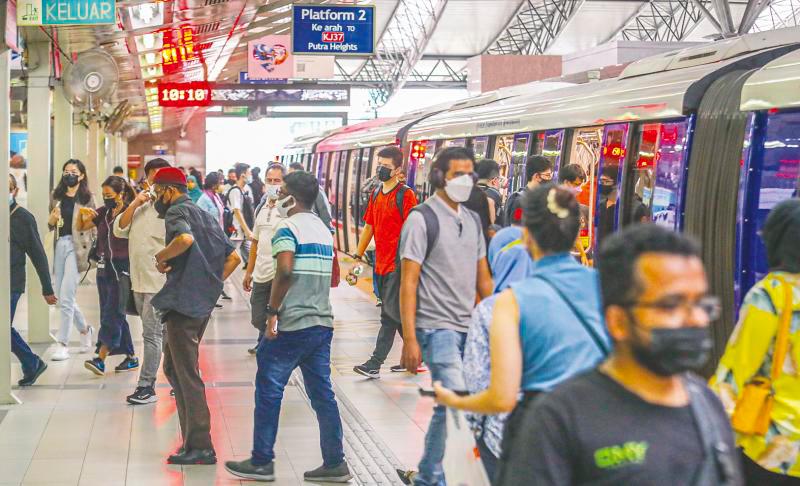TO commuters residing in the Klang Valley who lament about perpetual traffic congestion, think again. It is important to recognise the pivotal role that rail-based transport has played in alleviating traffic congestion in the Klang Valley.
Private vehicles offering door-to-door convenience have long held sway as the preferred mode of travel. Understandably, car owners are often willing to pay a premium for the luxury of convenience, and the majority of these private cars are singly occupied.
However, the advent of rail-based transportation, with the Mass Rail Transit (MRT) and Light Rail Transit (LRT) at the forefront, has dynamically altered this landscape, and ridership has improved significantly.
While the construction costs of rail systems are substantial, the myriad of direct and indirect benefits they bring to the economy are immeasurable.
In the heart of Kuala Lumpur and Petaling Jaya, a gradual but steady transition from road-dependent to rail-powered travel is unfolding.
As a frequent MRT user, I have witnessed this shift first-hand. During weekday mornings, the MRT from Taman Tun Dr Ismail station to Kuala Lumpur city is full when I board it, often leaving only standing room available.
Upon reaching Pasar Seni station to switch to the Kelana Jaya LRT line, the number of passengers is overwhelming. Extra security personnel are on hand to ensure orderliness.
As a transport economist, I find satisfaction in observing the growing number of Malaysians embracing MRT, LRT, monorail and KTM (Keretapi Tanah Melayu) services, despite the allure of private transportation’s door-to-door convenience.
Reflecting on my time at the Economic Planning Unit in the 1990s, the uphill struggle to persuade the public to adopt public transport was daunting.
However, with the proliferation of rail-based networks, it is heartening to witness an increasingly receptive audience as seen in other cities, such as Singapore, London, Paris and Amsterdam, where rail-based transit is the preferred choice.
The emphasis by the government on rail-based public transport systems has somewhat reduced congestion on urban roads.
Kuala Lumpur and Petaling Jaya do face their fair share of traffic congestion during rush hours on weekdays but which city in the world does not? As road and rail infrastructure are costly, they are never built to cater to peak-hour traffic volume as they would be under utilised during the rest of the day.
The not-so-noticeable reduction in urban road congestion has occurred despite the increase in the number of private vehicles. Be mindful that the Klang Valley boasts of having an affluent population, who can afford to own more than one vehicle per family. My guess is that the average family has three vehicles.
The advantages of rail-based systems are manifold, encompassing aspects that enhance daily life while contributing to environmental preservation.
The reliability factor is also paramount – come rain or shine, amid road congestion or other circumstances, rail transport remains steadfast in delivering passengers punctually. On the contrary, roads are susceptible to flooding and slower traffic caused by partial road closures and accidents.
Furthermore, the intricate network of MRT and LRT lines intertwining Kuala Lumpur, Putrajaya and select parts of Selangor promotes unparalleled connectivity and accessibility.
The convenience, cleanliness and safety of rail systems fortify their status as the optimal choice.
From an ecological standpoint, the advantages are indisputable. Rail travel emerges as an environmentally conscious alternative, significantly reducing greenhouse gas emissions compared with private vehicles.
The economic aspect is worth highlighting, with affordable fares, especially for lower-income workers, students and seniors, spurring the shift away from private vehicles.
The MRT and LRT also promote tourism by offering cost-effective and seamless transportation for visitors.
In holistic terms, the cumulative benefits far outweigh the substantial investments necessary for building rail-based infrastructure systems.
While private cars and ride-hailing services offer unparalleled comfort, their convenience comes at a hefty cost.
The writer is the former secretary-general at the Chartered Institute of Logistics and Transport Malaysia. Comments: letters@thesundaily.com










